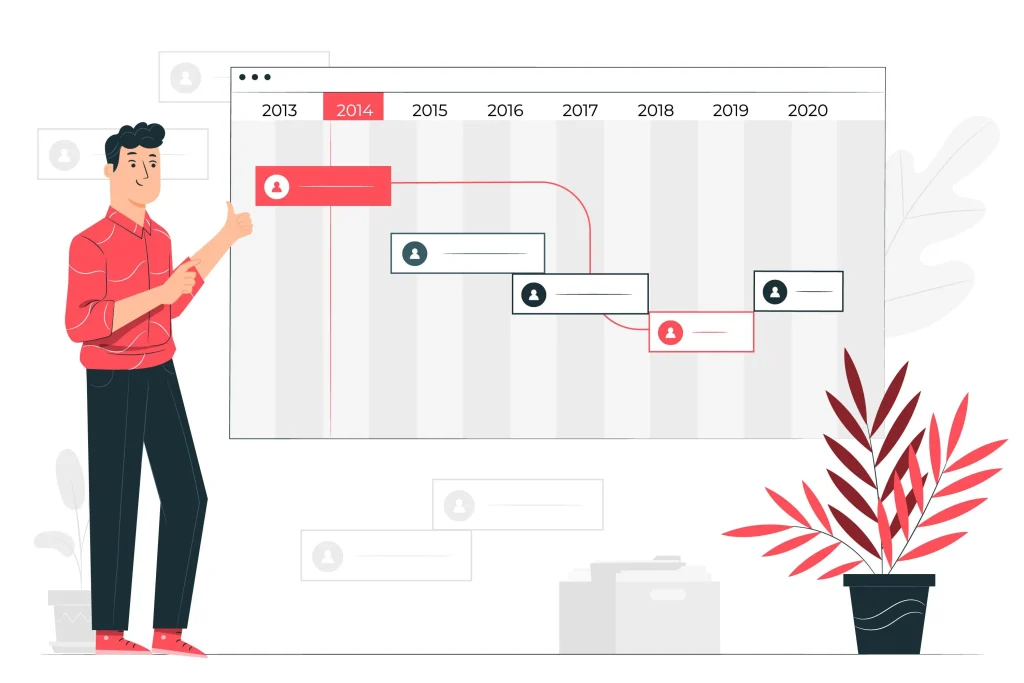
Effective time management emerges as a cornerstone for success in the dynamic landscape of small business. The constant juggling of multiple responsibilities, limited resources, and the need to adapt swiftly to changes make efficient use of time imperative. Small business owners must navigate myriad tasks, from client interactions to project deadlines, while fostering a culture of creativity and innovation. This article delves into the essentials of time management for small businesses, exploring key principles and strategies to optimize productivity and propel your business toward sustainable growth.
Trackable: Work Hours and Productivity
Monitoring work hours is a fundamental aspect of time management. Small business owners can track employees’ time on tasks, projects, or client-related activities. Productivity metrics, such as completed tasks, projects finalized, or sales made, provide insights into the team’s overall efficiency.
- Employee Work Hours:
Small business owners can track the actual hours employees spend on tasks and projects. This involves recording the start and end times of work, breaks, and any overtime. Utilizing time-tracking tools or software can automate this process, providing accurate data for analysis. - Task Allocation and Time Spent on Specific Activities:
Beyond tracking general work hours, it’s beneficial to delve into the specifics of how time is allocated to different tasks. Categorizing and monitoring the time spent on various activities – whether it’s client meetings, project development, or administrative duties – allows for a granular understanding of where resources are being utilized. - Identifying Productive and Non-Productive Hours:
Analyzing work hours can help identify periods of peak productivity and times when output may be lower. This information is valuable for optimizing work schedules, ensuring that high-priority tasks are tackled during peak hours, while less demanding activities are scheduled during periods when productivity naturally dips. - Quantifying Output and Deliverables:
In addition to tracking hours, measuring actual output and deliverables provides a quantitative assessment of productivity. This could include completed projects, tasks finalized, or sales generated within a specific timeframe. By correlating work hours with tangible results, businesses can gauge the efficiency and effectiveness of their operations. - Performance Metrics:
Establishing key performance indicators (KPIs) related to productivity allows for ongoing evaluation. These metrics may include project completion rates, client satisfaction scores, or sales targets. Regularly reviewing performance data enables small business owners to identify trends, address challenges, and implement strategies to enhance overall productivity. - Employee Feedback and Self-Reporting:
Beyond quantitative measures, incorporating qualitative feedback from employees is essential. Regular check-ins, one-on-one meetings, or self-reporting mechanisms provide insights into potential challenges or areas where additional support is needed. This two-way communication fosters a collaborative environment focused on continuous improvement. - Utilization of Time-Tracking Tools:
Leveraging technology is instrumental in tracking work hours and productivity. Time-tracking tools and project management software not only automate the process but also offer detailed reports and analytics. These tools can assist in identifying bottlenecks, optimizing workflows, and ensuring that resources are allocated efficiently.
By comprehensively tracking work hours and productivity, small businesses can gain a nuanced understanding of their operational dynamics. This data-driven approach empowers business owners to make informed decisions, allocate resources strategically, and foster a culture of continuous improvement within the organization.

Trackable: Project Timelines and Milestones
Small businesses often manage multiple projects simultaneously. Tracking project timelines and milestones helps assess progress, identify potential bottlenecks, and adjust resources as needed. This allows for better project management and timely delivery of products or services.
- Project Planning:
The foundation of tracking project timelines and milestones lies in thorough project planning. Define the scope, objectives, and tasks involved in the project. Break down the project into smaller, manageable components, creating a roadmap for the entire process. - Timeline Creation:
Establishing a realistic timeline is crucial. Assign specific durations to each task and identify dependencies between tasks. This timeline becomes the benchmark against which progress can be measured. Use project management tools to create visual timelines that offer a clear overview of the project’s expected duration and deadlines. - Milestone Identification:
Define key milestones that represent significant achievements within the project. Milestones serve as markers of progress and help ensure that the project stays on track. Examples of milestones include completing a phase of development, conducting a successful testing round, or achieving a specific project deliverable. - Task Allocation and Resource Management:
Assign tasks to team members based on their skills and expertise. Clearly communicate roles and responsibilities to avoid confusion. Efficient resource management, including the allocation of human and material resources, is essential to meet project timelines and milestones effectively. - Regular Progress Monitoring:
Consistently monitor progress against the established timeline. Regular check-ins, status meetings, or project management software can facilitate this monitoring process. Identify any deviations from the plan early on and address them promptly to prevent delays. - Adjustments and Flexibility:
Despite careful planning, unexpected challenges may arise. Being flexible and adaptable is crucial. Evaluate whether adjustments to the timeline are necessary and, if so, communicate these changes to the team promptly. This proactive approach helps manage expectations and ensures that the project remains aligned with business objectives. - Client Communication:
If the project involves client deliverables or milestones, maintain open and transparent communication with clients. Provide updates on progress, discuss any challenges, and confirm that the project is meeting their expectations. Client satisfaction is closely tied to effective project management. - Utilization of Project Management Tools:
Leverage project management tools and software to streamline the tracking process. These tools often offer features such as Gantt charts, task lists, and progress reports. Utilizing technology enhances collaboration, facilitates communication, and provides real-time visibility into project timelines. - Post-Project Evaluation:
After project completion, conduct a comprehensive evaluation. Analyze what went well, what challenges were faced, and how the team can improve for future projects. Documenting lessons learned contributes to ongoing process improvement and informs the planning of subsequent projects.
Small businesses can ensure project success and timely completion by meticulously tracking project timelines and milestones. This approach not only enhances client satisfaction but also contributes to the overall efficiency and reputation of the business in the marketplace.

Trackable: Client Interactions and Communications
Effective client management is critical for small businesses. Tracking the time spent on client interactions, meetings, and communication can provide valuable insights into client relationships. This helps identify areas that require more attention and ensures that clients receive the necessary support promptly.
- Client Relationship Management (CRM) Systems:
Implementing a CRM system is a fundamental step in tracking client interactions. These systems centralize client data, including communication history, preferences, and past transactions. Utilize CRM tools to record and organize emails, calls, meetings, and any other communication with clients. - Communication Logs:
Maintain comprehensive communication logs for each client. Document the date, time, and nature of interactions, including discussions, decisions, and any action items. This detailed log serves as a valuable reference, ensuring that all team members are informed about the client’s history and expectations. - Scheduled Follow-ups:
Establish a system for scheduling follow-up communications. This can include regular check-ins, updates on ongoing projects, or post-service evaluations. Automated reminders or calendar alerts can help ensure that these follow-ups are consistently executed, reinforcing proactive client engagement. - Response Time Metrics:
Track response times to client inquiries. Set benchmarks for responding to emails, answering phone calls, or addressing client concerns. Timely responses contribute to a positive client experience and demonstrate a commitment to meeting their needs promptly. - Client Surveys and Feedback:
Periodically solicit feedback from clients through surveys or direct communication. Use this feedback to assess the quality of interactions, identify areas for improvement, and gauge overall client satisfaction. Positive feedback can also be a valuable testimonial for marketing purposes. - Documented Agreements and Deliverables:
Document client agreements, project scopes, and deliverables. This ensures a clear understanding of expectations on both sides and provides a reference point for tracking progress. Regularly revisit these documents during client interactions to confirm alignment and address any potential discrepancies. - Utilization of Communication Platforms:
Leverage communication platforms and tools to streamline interactions. Email tracking tools can provide insights into when emails are opened, helping gauge client engagement. Project management tools with integrated communication features facilitate collaborative discussions and maintain a centralized record of communication. - Analyzing Patterns and Trends:
Use data analytics to identify patterns and trends in client interactions. Analyzing communication data can reveal preferences, common concerns, or areas where clients may require additional support. This data-driven approach enhances the ability to tailor communication strategies to individual client needs. - Training and Continuous Improvement:
Provide training for team members involved in client interactions. This includes effective communication skills, active listening, and understanding client needs. Regularly review and update communication protocols to adapt to changing client expectations and industry trends.
Small businesses can build and nurture strong client relationships by meticulously tracking client interactions and communications. This contributes to client satisfaction and enhances the business’s reputation and fosters loyalty, which is especially crucial in the competitive landscape of small enterprises.

Trackable: Administrative Tasks
Administrative tasks are a part of every business operation. Tracking the time spent on administrative duties, such as invoicing, record-keeping, and routine paperwork, allows for better resource allocation and optimization of internal processes.
- Task Categorization:
Begin by categorizing administrative tasks based on their nature and urgency. Common categories include financial tasks (invoicing, budgeting), documentation (record-keeping, filing), and operational tasks (scheduling, logistics). By understanding the different types of administrative duties, businesses can create a systematic approach to tracking and managing them. - Time Allocation:
Assign specific time blocks for administrative tasks. This could include setting aside dedicated time each day or designating specific days of the week for administrative responsibilities. Time blocking helps prevent these tasks from becoming overwhelming and ensures they receive consistent attention without interfering with other critical business activities. - Utilization of Task Management Tools:
Leverage task management tools or project management software to create to-do lists for administrative tasks. These tools allow for the organization of tasks, setting priorities, and tracking progress. Automated reminders can help ensure that deadlines for administrative duties are consistently met. - Invoicing and Expense Tracking:
Track the time spent on invoicing clients and managing expenses. Timely and accurate invoicing contributes to steady cash flow, while diligent expense tracking ensures financial transparency. Utilize accounting software or dedicated tools to streamline these processes and generate reports for better financial management. - Record-Keeping and Documentation:
Establish a centralized system for record-keeping. Track the time spent on documenting important information, such as contracts, client communications, and project details. Well-organized documentation facilitates efficient retrieval of information when needed and supports compliance with legal and regulatory requirements. - Employee Time and Attendance:
If applicable, track employee time and attendance. This includes monitoring work hours, breaks, and time off. Time and attendance tracking contribute to accurate payroll processing and help identify patterns related to employee productivity and availability. - Efficient Email Management:
Administrative tasks often include managing emails. Track the time spent on email correspondence, categorize emails for prioritization, and use tools to automate repetitive email tasks. This ensures that communication remains organized, and important messages are promptly addressed. - Regular Process Audits:
Conduct regular audits of administrative processes to identify areas for improvement. Evaluate the efficiency of existing workflows, eliminate unnecessary steps, and implement automation where possible. Streamlining administrative processes contributes to time savings and minimizes the risk of errors. - Training and Delegation:
Ensure that team members responsible for administrative tasks receive adequate training. Identify tasks that can be delegated to specific team members based on their skills and expertise. Delegating administrative responsibilities allows business owners to focus on strategic aspects of the business. - Regular Reviews and Adjustments:
Periodically review the effectiveness of administrative time management strategies. Analyze data related to task completion, identify any bottlenecks or inefficiencies, and make adjustments accordingly. Continuous improvement ensures that administrative processes evolve to meet the changing needs of the business.
By tracking administrative tasks, small businesses can optimize their operations, reduce the risk of oversights, and ensure that essential functions run smoothly. This proactive approach to administrative time management contributes to the overall efficiency and sustainability of the business.

Untrackable: Creativity and Problem-Solving
Creativity and problem-solving are integral to small business success, but these processes are inherently difficult to quantify. While time spent brainstorming or strategizing is vital, attempting to track every moment of creative thinking may stifle innovation. It’s essential to allow room for unstructured time that fosters creativity without the pressure of constant monitoring.
- Inherent Subjectivity:
Creativity is inherently subjective, varying from person to person. What sparks innovation or a breakthrough idea for one individual might differ significantly for another. Attempts to quantify or standardize the creative process may stifle individuality and hinder the emergence of diverse and unconventional solutions. - Non-linear Nature:
Creativity and problem-solving often follow non-linear paths. Unlike tasks with defined steps and outcomes, these processes involve exploration, experimentation, and sometimes unexpected leaps of insight. Attempts to impose a rigid tracking structure may overlook the inherent fluidity of creative thinking. - Varied Inspirations:
Creative ideas can stem from a multitude of sources, including personal experiences, external stimuli, or even unrelated fields. Tracking the origins of creative inspiration is challenging, as individuals may draw from diverse influences that cannot be neatly categorized or measured. - Subjective Evaluation of Quality:
Assessing the quality of creative outputs is subjective and context-dependent. What one person deems a groundbreaking solution might not resonate with another. Trying to establish universal criteria for evaluating creative endeavors oversimplifies the richness and complexity of the creative process. - Emotional and Intuitive Elements:
Creativity often involves emotions and intuition, which are inherently challenging to quantify. A solution to a problem might emerge from a gut feeling, an emotional connection, or an intuitive understanding that is difficult to capture through traditional tracking methods. - Freedom from Constraints:
Imposing too many constraints or deadlines on creative tasks can hinder the free-flowing nature of creativity. Creativity flourishes when individuals have the freedom to explore, experiment, and deviate from conventional approaches. Tracking every moment may introduce unnecessary pressure and inhibit the natural creative flow. - Trial and Error:
Problem-solving often entails a process of trial and error. Individuals may explore multiple avenues before arriving at a viable solution. This iterative process is difficult to capture in a linear tracking framework, as the value of unsuccessful attempts and the insights gained from them are integral to problem-solving. - Serendipity and Chance:
Creative breakthroughs and problem-solving can sometimes result from serendipitous moments or chance encounters. These unplanned occurrences are by nature unpredictable and cannot be systematically tracked or scheduled. - Dynamic Team Collaboration:
Collaborative problem-solving and creative endeavors within a team involve dynamic interactions. These interactions are shaped by the unique contributions of team members, making it challenging to quantify the individual impact of each team member’s creative input.
Recognizing the untrackable nature of creativity and problem-solving is crucial for fostering an environment where innovation can thrive. While certain aspects of these processes can be facilitated and encouraged, attempting to overly regiment or quantify them may impede the qualities that make creative thinking and problem-solving valuable for small businesses. Instead, businesses should focus on creating a supportive culture that encourages exploration, risk-taking, and the open exchange of ideas.

Untrackable: Employee Well-being and Mental Health
Employee well-being and mental health are crucial factors in a productive work environment. While tracking work hours and productivity is important, employees’ emotional and mental aspects cannot be accurately measured. It’s crucial to recognize monitoring limits in this area and prioritize a supportive work culture that values employee mental health.
- Subjectivity of Mental Health:
Mental health is inherently subjective, varying greatly from person to person. Each individual experiences and copes with stress, challenges, and mental health differently. Attempts to quantify mental well-being may oversimplify complex emotions and fail to capture the nuanced aspects of individual experiences. - Stigma and Privacy Concerns:
There is often a stigma associated with discussing mental health in the workplace. Employees may be hesitant to disclose their struggles due to fear of judgment or potential impact on their professional advancement. Attempting to track mental health without a sensitive and confidential approach can exacerbate these concerns. - Dynamic and Fluctuating Nature:
Mental well-being is dynamic, with fluctuations influenced by various factors such as personal life events, work dynamics, and external stressors. Tracking mental health as a static metric fails to account for these fluctuations, and employees’ well-being may change over time. - Multifaceted Determinants:
Employee well-being is influenced by a multitude of factors, including workload, relationships with colleagues, job satisfaction, work-life balance, and personal circumstances. Quantifying the impact of each of these elements on an individual’s mental health is complex and often intertwined with various external factors. - Personal Coping Mechanisms:
Individuals employ diverse coping mechanisms to manage stress and maintain their mental well-being. These coping strategies are personal and may include activities outside of work, support networks, or self-care practices. Trying to track these individualized approaches is challenging and may not provide an accurate reflection of an employee’s mental state. - Effect of Organizational Culture:
The organizational culture significantly influences employee well-being. Factors such as leadership style, communication practices, and the overall work environment can impact mental health. However, these cultural aspects are complex and qualitative, making them challenging to measure in a quantitative tracking system. - Self-Reporting Limitations:
Relying solely on self-reported data may not provide a comprehensive understanding of employee well-being. Employees may be hesitant to disclose mental health challenges due to concerns about job security or potential biases. Creating a culture that encourages open communication is essential for accurate self-reporting. - Long-term Impact of Interventions:
Implementing well-being interventions, such as wellness programs or mental health support, may have long-term effects that are challenging to measure immediately. Assessing the sustained impact of such interventions requires ongoing observation and qualitative insights that go beyond simple metrics. - Individual Differences in Perception:
Perceptions of well-being vary based on individual experiences and expectations. What one employee perceives as a positive work environment may differ from another’s perspective. Attempting to standardize metrics for well-being may not capture the diverse ways employees define and experience a healthy workplace.
A more holistic approach is required given the untrackable nature of employee well-being and mental health. Small businesses should prioritize creating a supportive culture that encourages open communication, destigmatizes discussions about mental health, and provides resources for employees to seek support when needed. Qualitative feedback, regular check-ins, and a genuine commitment to employee welfare contribute to a healthier work environment.

Untrackable: Unexpected Interruptions and External Factors
Small businesses often face unexpected challenges and interruptions that can impact productivity. While tracking planned tasks is possible, unforeseen events and external factors may disrupt the best-laid plans. Acknowledging these variables and incorporating flexibility into time management strategies is essential.
- Unpredictability and Variability:
Unexpected interruptions and external factors are, by definition, unpredictable. They can arise without warning and vary widely in nature, making it challenging to establish a systematic tracking mechanism. Attempting to anticipate every possible interruption may lead to an overly complex and impractical system. - Diverse Sources and Origins:
External factors can stem from a multitude of sources, including market changes, economic shifts, natural disasters, or unforeseen technical issues. The diversity of potential sources makes it challenging to create a comprehensive list of all possible external factors that could impact a small business. - Unique Impact on Each Business:
The impact of unexpected interruptions and external factors can be highly specific to each business. What may disrupt one company’s operations might have a minimal effect on another. Tracking these impacts in a standardized way would require a level of customization that may not be practical or feasible. - Real-time Dynamics:
External factors often unfold in real-time, and their impact can be immediate. Attempting to track these events as they happen may divert attention from addressing the actual challenges posed by the interruption. The focus should be on effective response and mitigation rather than meticulous tracking. - Interconnectedness of Factors:
External factors are often interconnected, creating a complex web of influences. A single event may trigger a chain reaction of consequences. Tracking the full extent of these interconnected influences in real-time is a complex task that may not provide actionable insights for timely decision-making. - Limitations of Quantification:
The qualitative nature of many unexpected interruptions and external factors makes them resistant to quantification. While certain aspects may be measured, such as financial losses or downtime, the broader implications, such as shifts in consumer behavior or market sentiment, are challenging to express in numerical terms. - Adaptive Responses:
Effective responses to unexpected interruptions require adaptability and flexibility. Implementing rigid tracking systems may hinder the organization’s ability to quickly adjust strategies in response to changing circumstances. Adaptation and problem-solving take precedence over meticulous tracking in such situations. - Impact on Emotional Well-being:
Unexpected interruptions and external factors can also have an emotional impact on individuals within the organization. Stress, uncertainty, and the need for quick decision-making can affect the emotional well-being of employees and business owners. The emotional dimension is challenging to quantify accurately. - Learning and Adaptation Over Time:
Small businesses often learn from unexpected interruptions and external factors, adapting their strategies over time. While the lessons learned are valuable for future preparedness, the dynamic nature of the business environment makes it challenging to implement a standardized tracking system that captures the evolving nature of these experiences.
Small businesses should prioritize building resilience and agility in navigating unexpected interruptions and external factors. Rather than focusing on meticulous tracking, businesses can develop strategies for swift response, continuous learning, and adaptive management to thrive in an ever-changing landscape.
Conclusion
Time management in small businesses is not just a matter of scheduling tasks; it is a strategic imperative shaping the foundation of success. As we reflect on the key aspects discussed in this article, it becomes evident that prioritization, clear goal-setting, effective delegation, and embracing technology are pivotal elements in the pursuit of optimal time utilization. The ability to track and manage work hours, project timelines, client interactions, and administrative tasks empowers small business owners to make informed decisions, allocate resources judiciously, and foster a culture of efficiency.
Yet, within this structured framework, we must acknowledge the untrackable elements – creativity, employee well-being, and the unpredictable nature of unexpected interruptions. Recognizing these inherent complexities, small businesses can cultivate a balance, ensuring that systematic time management coexists with an environment that encourages innovation, values mental health, and remains resilient in the face of unforeseen challenges.
In the ever-evolving landscape of small business, mastering time management isn’t just a skill; it’s a strategic advantage. By implementing the insights and strategies outlined in this article, small business owners can not only navigate the demands of their daily operations but also pave the way for sustained growth and success. When managed effectively, time becomes a catalyst for innovation, a driver of productivity, and, ultimately, a key contributor to the triumph of small businesses in today’s competitive market.
This article was created by the FirstHR team. You can find even more helpful HR tips in the Guides section. In the Template section we have prepared for you the most popular HR documents that you can download for free. Enjoy!





